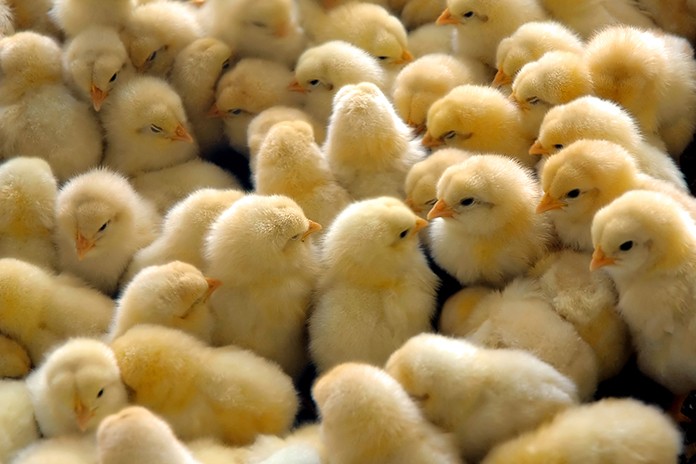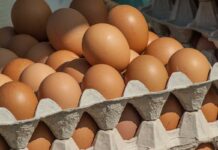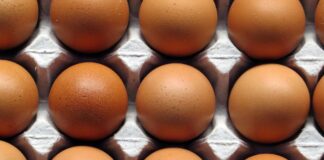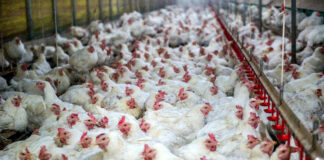
The USPOULTRY Foundation announces the completion of a funded research project at AviServe LLC in Newark, Del. (USA), that has revealed a new tool for controlling reovirus.
 The first objective of the project was to develop an in-vivo model for vertical transmission of reoviruses and use this model to evaluate disease pathogenesis, virus persistence and transmissibility to contact chickens.
The first objective of the project was to develop an in-vivo model for vertical transmission of reoviruses and use this model to evaluate disease pathogenesis, virus persistence and transmissibility to contact chickens.
The second objective was to determine the impact of age on susceptibility of chickens to development of clinical viral arthritis/tenosynovitis.
The third and final objective was to determine how reovirus antigenic variants evolve in-vivo.
Vertical transmission of reovirus
Several models of vertical transmission were initially evaluated until one was chosen for further studies. When embryonated eggs were inoculated in ovo, reovirus was isolated from chicks at day of hatch, and persisted through three weeks of age. This shows that vertically infected chicks may shed reovirus in the field through at least three weeks of age and can infect susceptible contacts.
Accordingly, it is important to prevent or reduce vertical transmission of reovirus via immunization of parent flocks or other disease control strategies. In ovo inoculated chicks presented with swollen foot pads as early as three days of age and developed severe clinically apparent arthritis/tenosynovitis by the second week of life. Swollen foot pads were not observed in chickens that were infected with reovirus after hatch, and this lesion may be indicative of vertical infection when observed in commercial settings.
Additionally, body weights were severely affected in the in ovo-inoculated groups, and the effect was greater in the in ovo-infected chickens than chickens exposed post-hatch. Uneven body weights are often observed in commercial flocks afflicted with viral arthritis/tenosynovitis.
Horizontal transmission of reovirus
It has been evaluated also the horizontal transmission of reovirus from in ovo-inoculated chickens to susceptible contacts. Exposed contact chickens became infected, shed reovirus through at least three weeks of age, and developed viral arthritis/tenosynovitis. An age-associated resistance to development of viral arthritis/tenosynovitis was observed when chickens were exposed to reovirus at different ages. The susceptibility to viral arthritis/tenosynovitis incrementally dropped from 100 percent when chickens were exposed to reovirus at day of hatch to 25 percent when chickens were exposed at 21 days of age. None of the chickens exposed to reovirus at 28 days of age developed the disease within the limits of this investigation. This is significant because viral arthritis/tenosynovitis is currently managed through breeder vaccination, and the results indicate that progeny must be protected via maternal antibodies to control infection prior to three weeks of age when age-associated resistance develops.
Finally, full genome of the reovirus used in this study (AVS-FTU) was sequenced and analyzed. Most genes are highly homologous to other chicken reoviruses, except for gene M2 (μB). This major outer capsid protein sequence is most similar to one reported in a turkey reovirus isolated in 2015. The significance of this is not known, but we have isolated several other natural reassortant reoviruses and will study them in more detail in the future.
Conclusions
In conclusion, we have developed a model to mimic vertical transmission of reoviruses in chickens and have used this model to study pathogenesis of viral arthritis/tenosynovitis including virus shed, persistence, transmission, and immune response. Additionally, we utilized the vertical transmission model to develop a horizontal transmission model, which more closely resembles field conditions. The horizontal transmission model was used to evaluate disease development and age-associated resistance when chickens are exposed to reovirus post-hatch, but also can be applied in the future to evaluate vaccine efficacy and progeny susceptibility to a more natural challenge.
The research was made possible in part by an endowing Foundation gift from Fieldale Farms and is part of the Association’s comprehensive research program encompassing all phases of poultry and egg production and processing.
Source: USPOULTRY

















